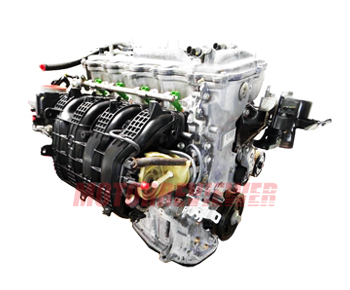True that the thicker oil may not necessarily be the preventative as long as a high-quality 0W20 oil is used (and changed according to accurate assessments of whether or not any occurrence of "severe conditions" applies).
But the thicker oil can be the best solution to deal with the problems that will eventually occur, at least on the particular Hondas and Toyotas that I've encountered where the "dry dipstick" was discovered on a higher-mileage engine. The thicker oil won't repair the engine, but not only will it lessen oil consumption of most worn engines, it will help prevent such a low-oil situation from ever occurring in a healthy higher-mileage engine. So I will stick to my recommendation to ditch the 0W20 when the car starts using enough oil that it might turn up low one day (since people tend to be irregular about checking their oil level).
Again though, all engines have different "optimum" oil viscosity grade depending on temperature, particularly the coldest starting temperature. There is nothing about the US-bound 2ARfe engine that circumvents this reality, regardless of what the printing on the oil cap may suggest.
If you look at the foreign-market oil viscosity grade charts, you will see that Toyota lists more than one grade of oil that can be used in
all temperatures,
including the 0W20 and the 5W30.
So why would they re-design the engine for the US market when the "world" engine already is rated to handle 0W20 at all temperatures?
It costs really big money for a car company to develop a new engine. Any re-design adds heavily to the cost, so the bean-counters i.e. shareholders wouldn't be happy.
If the foreign-market engines were different, then it wouldn't be permissible under US EPA rules for anyone to import used engines to the US for use in any US-market car. And yet used foreign engines
are imported and then sold here!
The oils beginning with 10W can be used down to zero F. So where is there any difference with the American-market engine, other than the very different regulatory environment and monetary incentive for Toyota to use their economical cars to essentially subsidize against large "guzzler" penalties of their more-profitable "boat"-class vehicles?
You do realize the bias that the above scenario creates in terms of what Toyota puts in writing on the US-market filler cap, right?
One more thing to consider is that some of the critical wear points that these particular engines are vulnerable to do not involve the sort of hydro-dynamic lubrication that the pressurized plain bearings are supported by. The part of the cam timing phasers that wears, notches, then causes loud noises is steel, and does not move continuously so is not supported by any hydrodynamic oil film. These are the kinds of parts which will wear out faster when using a thinner lubricant, especially today when zinc levels (which prevents wear on steel parts) is lower than ever. The Car Care Nut explained the wear part problem in one of his videos, but did not correlate it to lubrication because He/Toyota would never admit that thin oil can cause such problems (becoming thinner-yet when hot, or causing greater static friction when cold).
Likely the foreign-market cars that are typically using thicker oil do not even have many of those VVTI phaser problems. But since thinner oil saves Toyota money, US-market cars get the noises and the repair bills, usually after the warranty has passed.
Keeping in mind that this thread was about a car with a likely oil-burning issue not quantified.
If the engine is damaged it might be toast. If thicker oil makes an oil-usage issue manageable in lieu of replacing the engine, what harm is done, especially as many people have already been using heavier-grade oil in their healthy US Toyotas for long periods of time?
But it sounds like some are saying that the US-bound 2ARFE is so special that it not only has to use only one grade of oil, it's owner also has to delay changing that same oil until 10k miles, instead of 10k km. That is some wild technology, I wonder how it works? Did Toyota win any "Car of the Year awards for that? Why didn't they ever even mention this great achievement?
If you look at the review of the 2ARFE engine below, you'll see that this engine was designed for use with 5W30 or 10W30 as the basic recommended oils for normal conditions:
What is the 2AR-FE 2.5L Engine ? Is it good or bad? Read about Toyota 2AR-FE 2.5L Engine design and features, its the most common problems and relaibility.
www.motorreviewer.com






